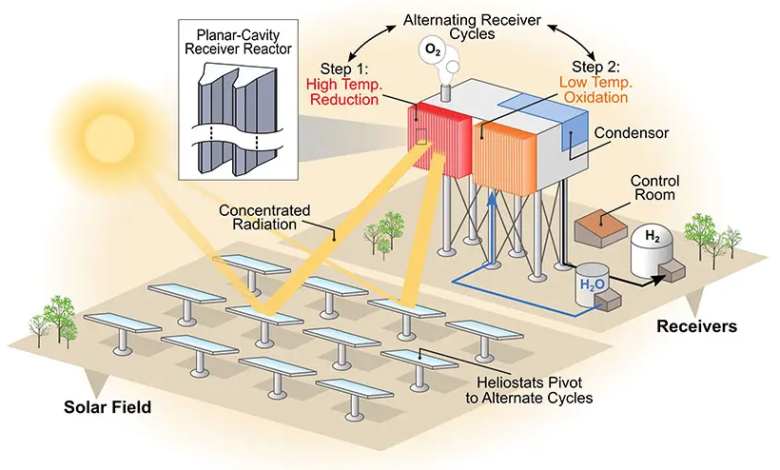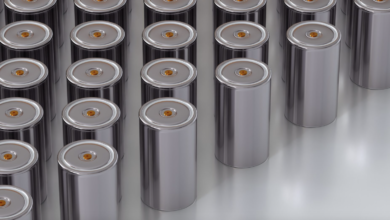Solar hydrogen, a new thermochemical pathway for H2

Thermochemical production of solar hydrogen, you look for the perfect material
(Sustainabilityenvironment.com) – The US government’s goal for its energy research is clear: to reduce the cost of clean hydrogen from the current $5/kg to $1/kg by the end of the decade.
The way to achieve this goal is through the Hydrogen Shot program, to develop innovation and explore new approaches and technologies. It is this scenario that fits the production system studied by scientists of the National Renewable Energy Laboratory (NREL). The researchers have focused their attention on an innovative water-splitting technology called solar thermochemical generation of hydrogen (STCH – Solar ThermoChemical Hydrogens).
Unlike electrolysis which requires electricity to break down water molecules, STCH systems rely on a two-step chemical process. In this process, metal oxides are first reduced for oxygen release, through temperatures above 1,400 degrees Celsius. And then re-irradiated with steam at lower temperatures to produce hydrogen. The Sun provides the heat at a high temperature, whose energy is collected thanks to a heliostat field and concentrated on the receiver of the first reaction chamber.
Technology can potentially be much more energy-efficient than electrolysis, but the research is still in its infancy.
Read also Reference-factory.H2 gives a green hydrogen digital twin
“This is certainly a very challenging field and with several questions still unanswered, mainly on the perspective of materials,” explains Zhiwen Ma, an engineer at the NREL and lead author of a new study in the magazine Renewable Energy. The publication evaluates the performance of various materials for the production and use of hydrogen in the context of a system platform created ad hoc to highlight advantages and technical-economic gaps in the path towards the scale-up.
One of the challenges of the research was identifying perovskites capable of managing the high temperatures required, reaching the performance targets.
“The material was not necessarily found,” adds researcher Genevieve Saur, co-author. “But this analysis serves to provide some limits on where we think costs will focus, if materials met the goals and expectations that the research community envisions”.





